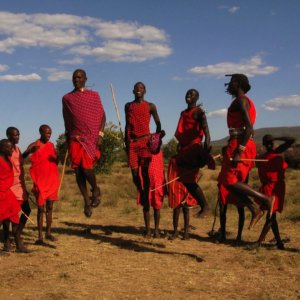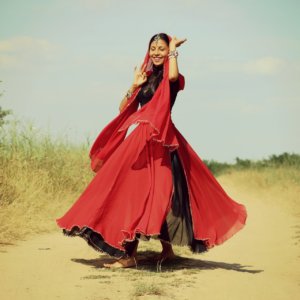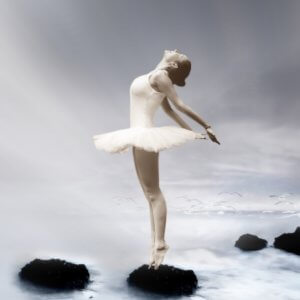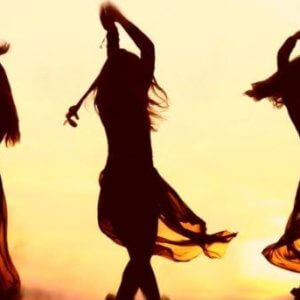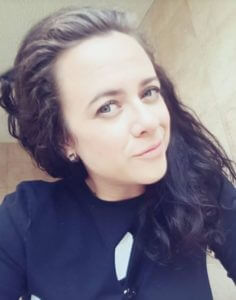
The development of dance from the Stone Age through the classical to intuitive
 29. 04. 2019
29. 04. 2019

From the first moments of known human history, dance was accompanied by ancient rituals, spiritual gatherings and social events. As a trance, spiritual power, pleasure, expression, Performance and Interaction Dance has been introduced into our culture since the earliest moments of our existence. This day, 29.04., We celebrate the International Day of Dance…
Dance and its history
Od the moments when the first African tribes covered their colors until the moment when music and dance spread in all four corners of the world. The dance is undoubtedly one of the most distinctive forms of communication we know.
Nejstarší Evidence of the existence of dance comes from the 9000 years old cave paintings, which were found in India. They depict various scenes of hunting, childbirth, religious rites, and funerals especially the communal celebration and dance. Because dance alone cannot leave clearly identifiable archaeological artifacts, the scientist sought secondary tracks - written word, stone carvings, paintings and similar artifacts.
The period when the dance spread can be traced back to the third millennium BC. At that time, the dance began to be Egyptians an integral part of religious rites. Judging by the many images of the tombs, Egyptian priests used musical instruments and dancers to imitate important events - stories of gods and cosmic patterns of moving stars and sun.
Tato tradition continued in ancient Greecewhere dance was used very regularly and openly to the public (which eventually brought the birth of the famous Greek theater in 6. century BC). Ancient paintings of 1. Millennium clearly speaks of many dance rituals in Greek culture, especially grand dance performances before the opening of the original Olympic Games.
Dance began to be part of rituals
As time went by, many other religions used dance as part of rituals - for example Hindu dance Bharata Nhatyam, who is dancing today.
Of course not all the dances in these ancient times were intended for religious purposes. Ordinary people used dance to celebrate, entertain, seduce, and build a better mood.
One of the most important events is i annual celebration in honor of the Greek god of wine Dionysa (and later the Roman god Bacchus). The celebration included dancing and drinking for a few days. 1400 years before Christ the old Egyptian painting showed a group of countless dressed girls who danced for a rich male crowd, supported by several musicians. This kind of entertainment continued, up to medieval times and early Renaissance, when ballet became an integral part of the rich class.
European dances
European dances before the Renaissance were not widely documented. There is only today several isolated fragments of their existence. The most basic chain-shaped dance practiced by commoners was most widespread across Europe, but the coming of the Renaissance and New forms of music have brought many other styles in fashion.
Renaissance dances from Spain France and Italy were soon surpassed by baroque dances that became popular in French and English courts.
After the French Revolution, many new types of dances appear, focusing on less restrictive clothing for women and a tendency to bounce and jump. These dances in 1844 soon became even more energetic, with the beginning of the so-called "XNUMX". International polka craze, which also brought us the first look of the famous waltz.
After a short period of time, when great dance masters created a wave of complex dances, she began The era of modern dance, the career of the famous Vernon and Irene Castle ballrooms. After 20. Many modern dances (Foxtrot, One-Step, Tango, Charleston, Swing, Postmodern, Hip-Hop, Breakdance and more) were invented in the 19th century. The expansion of the musical has brought these dances to worldwide popularity.
Intuitive dance
Recently we have the opportunity to go back to the roots when we encounter the concept of so-called intuitive dances. Intuitive dance is a way of physical and mental therapy. This dance allows you to listen to the inner call and, through free movement, find a way to balance physical, energetic and emotional bodies. Through intuition and senses, we examine the perceptions that emerge during the dance. The perceptions of ejen on the physical, but above all on the mental level, which are then interconnected in one piece at the level of perception - mind, body, emotion, imagination and soul.
Ta Ura also offers intuitive dance - calendar of places and events here: http://intuitivnitanec.cz/





 6
6